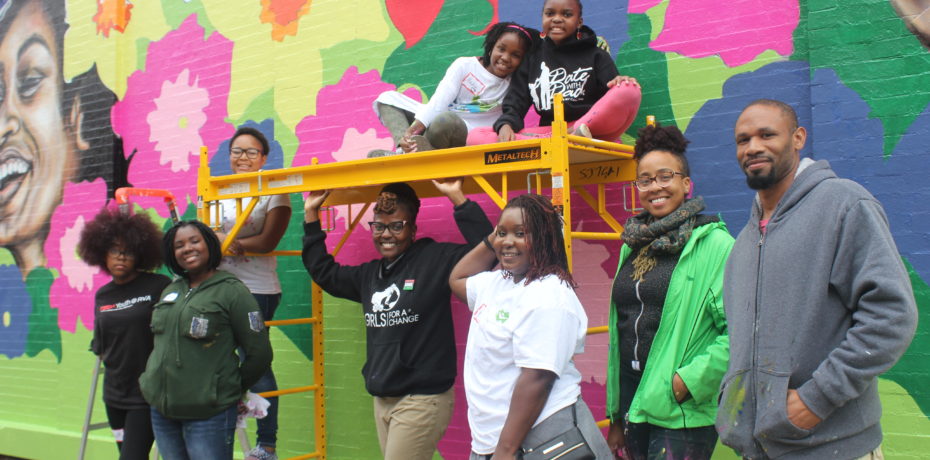At the Girls For A Change (GFAC) headquarters in North Chesterfield, Angela Patton speaks with authority and undeniable passion. Her emotion nearly moves her to tears as she talks about the challenges facing today’s young women of color and other young women living without an even economic playing field.
“Our entire mission is building girls up and preparing them for careers in the 21st century,” says Patton, affectionately called “Sister Angela.” As we sit in her office, a small room off to the side of the main auxiliary space in a former daycare center, she describes the need to educate young girls.
“Our work requires a lot of social and emotional healing because of race, gender, and bias issues. Our girls don’t utilize a lot of the opportunities in innovation, technology, and entrepreneurial spaces because they do not see themselves in those spaces,” she explains. “So, we’re building them up emotionally, and we’re providing them with the education and skills they will need to be successful because it is not exclusively a race and gender issue. It is an access and opportunity issue too.”
Patton describes the work she started over 15 years ago as her spiritual calling in life. “This is an unpopular cause. This work is hard. Black girls are not valued in today’s society, and we see that through examples like inequality in our pay, the lack of black women in corporate America, and the lack of access to capital for black women trying to start businesses.”
Patton has received widespread national awards and recognition. Her TED talk has been viewed over 800,000 times, she received the coveted “Champion for Change” award by the Obama Administration last year, and her work has been featured on NPR, PBS, and CNN.
The social and professional challenges Patton addresses in her work do not apply just to the girls; they also apply to herself and her non-profit organization. Patton says that financial sponsorships, grants, and donations remain a constant challenge for her. To assist, she recently called on the community to help purchase a van that will be used to transport the girls from school to the GFAC headquarters for after-school programing and tutor sessions.
Patton says that in 2018 she hopes to expand the GFAC mission and place an intentional focus on STEM education. By 2020, STEM jobs in the United States are expected to increase by 10 percent. However, according to a recent study released by the National Society of Black Engineers, the Society of Women Engineers, and Women in Engineering ProActive Network, African American women are pursuing engineering degrees at troublingly low rates. In fact, only 26 percent of the engineering bachelor’s degrees awarded to African Americans in 2011 went to women, despite outnumbering men in college nearly two to one. To address this need, Girls For A Change has started to work with girls as early as first grade, providing before- and after-school support in areas such as computer science, entrepreneurship, and coding.
“We try to prepare our girls for the world and prepare the world for black girls,” says Patton.
The execution of the Girls For A Change mission will manifest itself in many new ways in the year ahead. Patton points to the art mural, located on East Broad and N. 1st Streets, as an example of the type of continued collaboration that she will seek throughout 2018. The 100-foot mural, created in partnership with the UNITY Street Project and HandsOn Greater Richmond, showcases diverse images of young girls. “The mural is focused on busting stereotypes and showing the amazing spirit of black girls,” says mural designer Hamilton Glass.
Patton says that the future transformation of Girls For A Change will depend on volunteers for program support, and financial donations and grants for funding. To learn more, visit GirlsForAChange.org.

